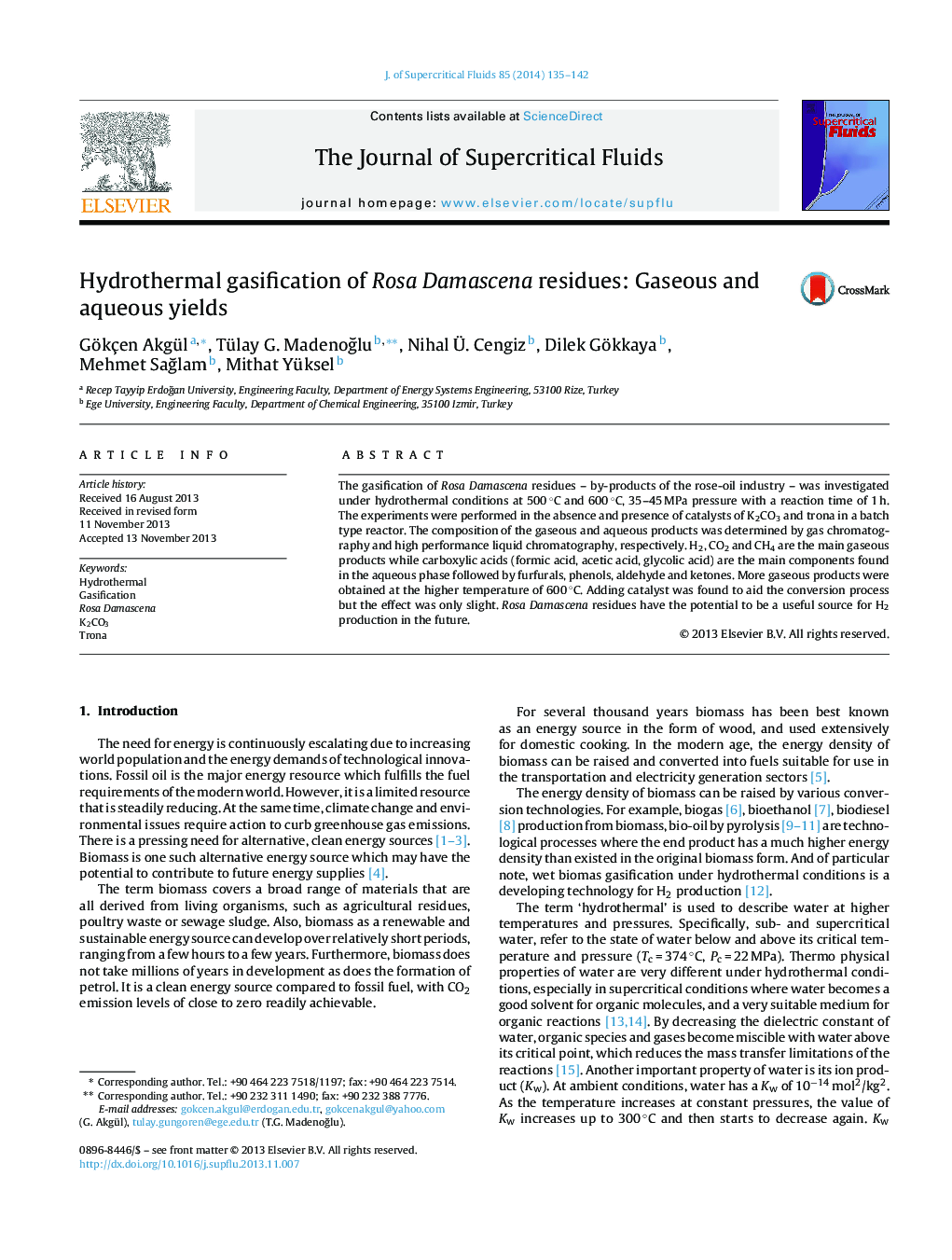| کد مقاله | کد نشریه | سال انتشار | مقاله انگلیسی | نسخه تمام متن |
|---|---|---|---|---|
| 230680 | 1427392 | 2014 | 8 صفحه PDF | دانلود رایگان |

• The hydrothermal gasification of Rosa Damascena residues – by-products of rose-oil industry – was examined.
• The effects of mineral catalysts on hydrothermal gasification were studied.
• H2, CO2 and CH4 are the main gaseous products while the aqueous phase has carboxylic acids, phenols, aldehyde and ketones.
• The amount of the gas increases when the temperature increases from 500 °C to 600 °C.
• Catalysts were found not to have a significant effect on the gasification of Rosa Damascena residues.
The gasification of Rosa Damascena residues – by-products of the rose-oil industry – was investigated under hydrothermal conditions at 500 °C and 600 °C, 35–45 MPa pressure with a reaction time of 1 h. The experiments were performed in the absence and presence of catalysts of K2CO3 and trona in a batch type reactor. The composition of the gaseous and aqueous products was determined by gas chromatography and high performance liquid chromatography, respectively. H2, CO2 and CH4 are the main gaseous products while carboxylic acids (formic acid, acetic acid, glycolic acid) are the main components found in the aqueous phase followed by furfurals, phenols, aldehyde and ketones. More gaseous products were obtained at the higher temperature of 600 °C. Adding catalyst was found to aid the conversion process but the effect was only slight. Rosa Damascena residues have the potential to be a useful source for H2 production in the future.
Figure optionsDownload as PowerPoint slide
Journal: The Journal of Supercritical Fluids - Volume 85, January 2014, Pages 135–142